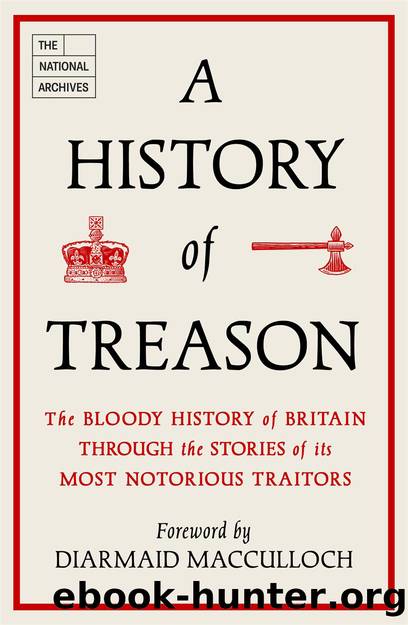A History of Treason by unknow

Author:unknow
Language: eng
Format: epub
Publisher: John Blake
Part III
TOWARDS A MODERN TREASON
Address to the Nation on âthe calamitous situation of our countryâ, published in July 1793 by the London Corresponding Society, and calling for parliamentary reform and universal suffrage. 20,000 copies were printed. (TS 24/3/5)
Eleven
NEWFANGLED TREASONS, 1794
But now all is to be changed ⦠Kings will be tyrants from policy when subjects are rebels from principle
EDMUND BURKE, REFLECTIONS ON THE REVOLUTION IN FRANCE, 1790, PP. 114â16
I
n December 1792 Charles Craufurd, the commander of a detachment of 2nd Dragoon Guards billeted across the south west of England, staged spectacles of hate. In each of the towns where his men were quartered, an effigy was led through the town in front of numerous crowds, mounted on an ass and led by a hangman. Shown âevery possible mark of indignityâ, the effigy was then burned amidst repeated exclamations of âGod Save the Kingâ, and âconstant cheering and huzzahring [sic]â. The dummy was dressed up as Thomas Paine, the radical writer, whom many considered a traitor.
The French Revolution of 1789 reverberated globally, not least in Britain. Its ideas of equal rights and representation found willing ears across the Channel, where just 4 per cent of the population were unevenly able to elect members of Parliament. Paine, whose Common Sense had been so central to the intellectual culture of the American Revolution, published his two-part Rights of Man in 1792, defending the French revolutionaries and attacking Britainâs constitutional settlement â he became the foremost voice of the French in the English-speaking world.
Rights of Man was written as a riposte to the work of another former supporter of the Americans, Edmund Burke MP. In 1790, Burke had published his Reflections on the Revolution in France. Burke claimed that the revolution would collapse into violent anarchy, and that the British constitution was the ultimate safeguard of liberty and happiness. The Treasury Solicitor obtained a copy of Paineâs work, underlining the most dangerous passages.
Paine and Burke were the pre-eminent voices of two factions of popular politics that were invigorated by the Revolution: loyalism, against it; and radicalism, sympathetic and aiming at parliamentary and wider reform in Britain.
Parliamentary reform was not a new idea in Britain. It had been spoken about since the âGlorious Revolutionâ of 1688, but previously it had typically been led by the already enfranchised upper and middle classes. What was novel about the explosion of reformist political societies, associations and unions established in the 1790s was the presence of groups led by the working classes.
One such group, the London Corresponding Society (LCS), held its first meeting in late January 1792 (subscription just 1 penny). The inaugural meeting had just nine attendees. A fortnight later there were twenty-four. By May there were enough for the LCS to divide into nine âdivisionsâ, reporting to a general committee. Radicalism, sympathetic to the French Revolution and intent on fundamentally changing Britain, was an existential threat to the ruling class.
The Home Officeâs correspondence from late 1792 is awash with alarmist reports of radical activity. Paineâs works were being distributed cheaply, even for free, sometimes to troops.
Download
This site does not store any files on its server. We only index and link to content provided by other sites. Please contact the content providers to delete copyright contents if any and email us, we'll remove relevant links or contents immediately.
| Africa | Asia |
| Canadian | Europe |
| Holocaust | Latin America |
| Middle East | United States |
Fanny Burney by Claire Harman(25792)
Empire of the Sikhs by Patwant Singh(22184)
Out of India by Michael Foss(16315)
Leonardo da Vinci by Walter Isaacson(11918)
Small Great Things by Jodi Picoult(6108)
The Six Wives Of Henry VIII (WOMEN IN HISTORY) by Fraser Antonia(4799)
The Wind in My Hair by Masih Alinejad(4427)
The Lonely City by Olivia Laing(4126)
The Crown by Robert Lacey(4114)
A Higher Loyalty: Truth, Lies, and Leadership by James Comey(4039)
The Iron Duke by The Iron Duke(3650)
Millionaire: The Philanderer, Gambler, and Duelist Who Invented Modern Finance by Janet Gleeson(3575)
Sticky Fingers by Joe Hagan(3456)
Alive: The Story of the Andes Survivors by Piers Paul Read(3320)
Papillon (English) by Henri Charrière(3279)
Joan of Arc by Mary Gordon(3270)
Stalin by Stephen Kotkin(3091)
Aleister Crowley: The Biography by Tobias Churton(3026)
Ants Among Elephants by Sujatha Gidla(2928)
